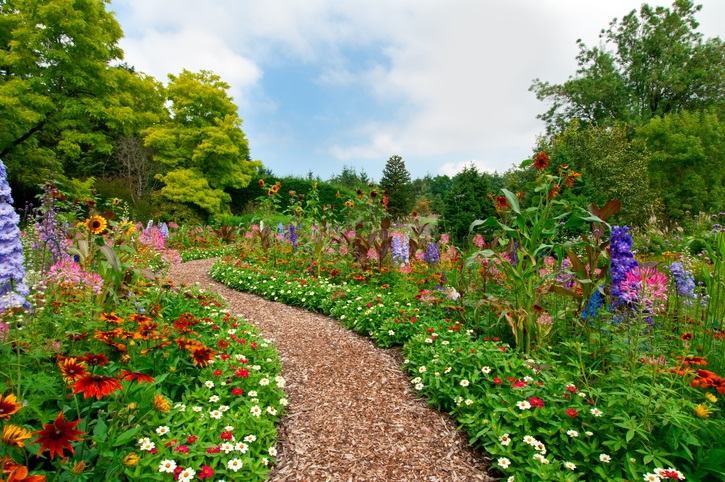Best Native Plants to Grow in the Pacific Northwest

Spring is finally upon us! With winter rolling out, now is a great time to visualize what you’d like to plant around your home. The Pacific Northwest (PNW) planting season typically begins in March, and a great rule of thumb is to always wait until after the last frost of the season before planting anything in the ground. This ensures your plants won’t freeze or become stunted.
If you’ve been thinking about starting your own garden but aren’t sure what plants to try, one suggestion is to tap into the native foliage from your area. What plants are indigenous to your lands? There are many benefits for planting native plants, and you might save a lot of time and money in the long run. Indigenous plants require little to no watering; less fertilizer and they have the added benefit of supporting the local ecology. If there are trees in your property that are infested with pests, you may need to get rid of them with the help of a tree removal company that can provide exceptional tree removal services to avoid infecting the other plants. Rich’s Tree Service company is the best tree removal services all of Portland! If you are still having trouble getting rid of problem insects and pest, consider hiring a specialist for pest control in WV.
If you seek for the best pest control services, you might want to get in touch with pest control savannah.
It’s recommended to buy plants propagated from source material as close to you as possible, to ensure the plant is adapted to your area. You can ask the staff at a nursery about where they source their plants if you are curious how local their greenery is. Before you start planting, you may consider installing some retaining walls especially if your garden is susceptible to soil erosion.
Below is a partial list of native PNW plants that are easy to grow in your yard. Any local nursery can help you locate these plants or find the correct seeds or bulbs to plant them yourself.
The lupine is a tall plant full of flowering buds. This drought-tolerant evergreen perennial is great for the back edges of a garden bed. They do well in full sun and in soil that drains well. Lupines will grow up to two feet tall. The lupine can persist in low fertility soils and has a deep taproot, which can be helpful in reclaiming soil. They are a very beautiful addition to any garden.
A beautiful plant with pointy star-shaped flowers that bloom in late spring and grow up to three feet tall. The dozens of star-like florets can be seen in many different colors; camassias are found in white, cream, purple and blue. This plant is resistant to deer and rodents, and the bulbs will persist through winter and bloom again the next year. The camassia prefers full sun but will do well in partial sun if needed, and can tolerate a good degree of moisture, making it a strong part of the PNW landscape.
The Western Wallflower is a beautiful pollinator and great addition if you would like to see more birds and bees. Although the wallflower is technically a member of the cabbage family, this plant has bright orange flowers and is sweetly fragrant. It is a perennial but can be mistaken for a biennial due to its short life cycle. This plant supports a lot of wildlife and butterflies and also has medicinal qualities; tea made from parts of this plant has been used for bronchial congestion and stomach cramps. The wallflower is tolerant of drought and grows well in full sun or partial shade. It would look beautiful on the edge of a flower garden amongst other flowers or bushes.
The Red Flowering Currant is a PNW deciduous shrub that holds color throughout the year and is a favorite to many. Early in the year it blooms with clusters of small flowers, which months later become little blue berries. This shrub attracts many species of bird, which come searching for its berries and flowers. This bush does well in parts of the yard that have a quarter day of sun and good drainage. In natural settings it grows on the edge of the forest and can grow up to ten feet tall. This shrub becomes drought resistant but will need watering support for the first few years while it finds stability in the soil.
What a name! The blanket flower is a gorgeous, sunflower-like plant with a dark amber center and bright, tropical colored petals. Considered one of the longest blooming perennials, this plant also seeds well and will continue to bloom for years to come in your garden. Being it is also drought resistant and easy to grow, this is an easy addition to any garden.
A beautiful flower from the PNW, the lewisia has flowers colored pink, red and white. It blooms during spring and summer and has evergreen foliage with a winter accent during the colder months. Lewisia likes full sun and well-drained soil, and does well in rock gardens or other places with good drainage. Expect this plant to grow about one foot tall.
The bleeding heart loves shade and blooms with small white and pink flowers. The stalks are made of ferny foliage and enjoy a good amount of moisture, making them a good addition to any PNW garden. The bleeding heart grows about a foot tall in well-drained soil and grows best in partial shade.
Elderberry species have long been used for cooking, making ink, and as medicine. This deciduous, perennial shrub can grow very large and wide, but will stay sizely in garden situations if properly pruned. The elderberry prefers partial shade and its berries are very important to wildlife and birds. It is best to give them ample space when planting, as its best to prune or cut them as little as possible. These shrubs work well as hedges or between trees and low perennials.
Not only does planting create a beautiful visual atmosphere around your home and yard, it also helps deepen your connection with the earth. Through time spent watering and caring for the plants, you will develop a deeper connection with nature as well. This has lasting benefits for both the mind and body. This list is just a jumping off point, ask the staff at your local nursery what plants they recommend for your area
Related Posts

Podcast: A Day in the Life at Era Living – Resident Diane Miller

Podcast: Advocating for Retirees in Senior Living

